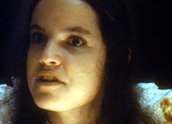


The Getting of Wisdom (1978)
Synopsis
In the early 1900s, Laura Tweedle Ramsbotham (Susannah Fowle) arrives at an exclusive Melbourne ladies’ college to jeers of 'country bumpkin’ and 'tweedle-dumb, ram’s bum’. Spirited and talented though she is, the pressure to fit in almost defeats her, until she learns to be as ruthless as the other girls. She invents an illicit liaison with the handsome new minister (John Waters), but becomes a pariah when this is revealed as a fantasy. An older girl, the elegant and kindly Evelyn Suitor (Hilary Ryan) takes her under her wing. Laura falls madly in love with her, but Evelyn leaves the school early in order to escape her ardour. Laura completes the ordeal of her schooling by winning a music scholarship – she will spend two years studying piano in Leipzig, Germany. She remains as defiant as ever.
Curator’s notes
The Getting of Wisdom came after Picnic at Hanging Rock, but before My Brilliant Career, and it has always seemed to be overshadowed by both. It’s not as lyrical as the former, and it doesn’t have the blazing beauty of Judy Davis in the latter. Bruce Beresford had completed Don’s Party a year before, but was still not credited as an entirely serious filmmaker, having made his name as the director of the two Barry McKenzie movies, neither of which fitted the terribly serious mood of Australian cinema of the late 70s. In fact, The Getting of Wisdom is probably the most personal film that Beresford has made, and one of his best.
Henry Handel Richardson was the nom de plume of Ethel Florence Lindesay Richardson – writer of The Getting of Wisdom. Beresford had read Handel Richardson’s autobiographical novel when he was about 15, and he identified strongly with the heroine – an ugly duckling outsider stuck in a priggish Melbourne boarding school. The school becomes a microcosm of Australia in the Victorian era, and Beresford is merciless in his depiction of its shortcomings. In fact, the film can be seen as an extension of the biting satire of Don’s Party, and the Bazza McKenzie films, but with a more dramatic tone. The casting of Barry Humphries as the Reverend Strachey – even if the role is played completely straight – adds to the sense that Beresford was trying to keep at least a hint of satire about the film.
The book was adapted by Eleanor Whitcombe (born 1923), who had had a major success on television with her adaptation of Seven Little Australians in 1973. The affair between Laura and Evelyn Suitor was barely hinted at in Richardson’s novel, which was published in 1910. Beresford made it much more central to the film and more concrete, citing Richardson’s own autobiography Myself When Young as evidence that the young Ethel Richardson had had a major attraction to another girl at the Presbyterian Ladies’ College, in Melbourne, in the 1880s. The debate about Richardson’s sexuality is ongoing in Australian literary circles. She was married to John George Robertson, a Scottish Professor, for almost 40 years, but her constant companion after his death in 1933 was Olga Roncoroni, who had lived with the couple since 1921.
Ethel Richardson died in 1946, and Roncoroni was her executor. Beresford has said he found her in a nursing home and persuaded her to sell him the rights to film the book. In any case, the lesbian overtones of the film are obvious, not just in the Laura–Evelyn relationship, but in the loving glances between two of the staff – Miss Zielinski, the French mistress played by Candy Raymond, and Miss Snodgrass, the English teacher (Jan Friedl). There were similar overtones in Picnic at Hanging Rock, and in Tom Cowan’s Journey Among Women (also 1977), so The Getting of Wisdom was not the first Australian film to feature women in love with women, as is sometimes claimed. It was still controversial at the time, however tastefully presented (see clip three).
The central role was played by Susannah Fowle, a Melbourne schoolgirl who had no acting experience, but a blazing screen presence. Indeed, her performance has kept the film from dating. She’s angry from the start of the film to the end. She has grown up, but not cooled down. Ethel Richardson left Australia when she was 18, and returned only once (in 1912, to research her masterwork, The Fortunes of Richard Mahony). She studied music in Leipzig, just as Laura Ramsbotham is about to do, and lived the rest of her life in Germany and Britain. Part of the wisdom that Richardson apparently gained from her schooling in Melbourne was that Australia would not be her home, ever again.
- Overview
- Curator’s notes
- Video 3 clips

- Principal credits
- Find a copy
- Make a comment
- Map
- Add your review



